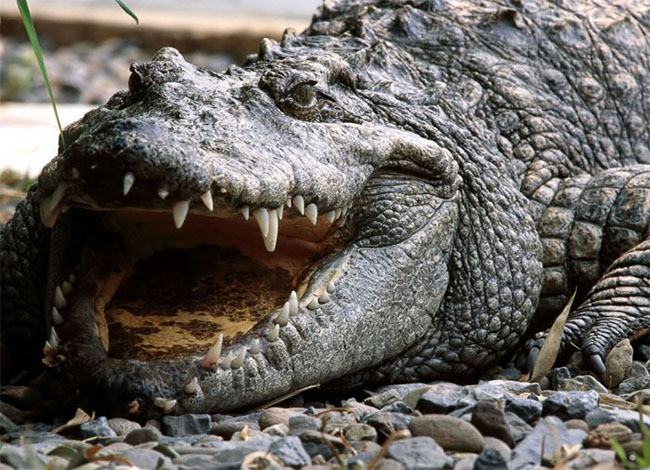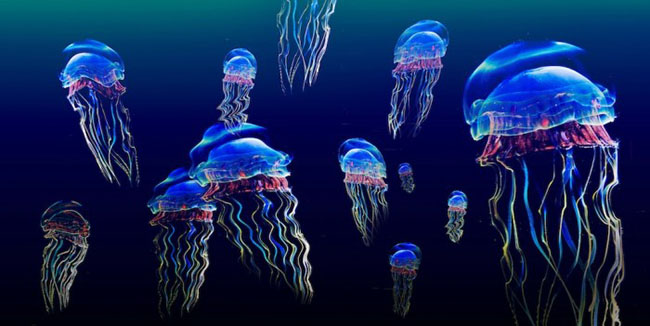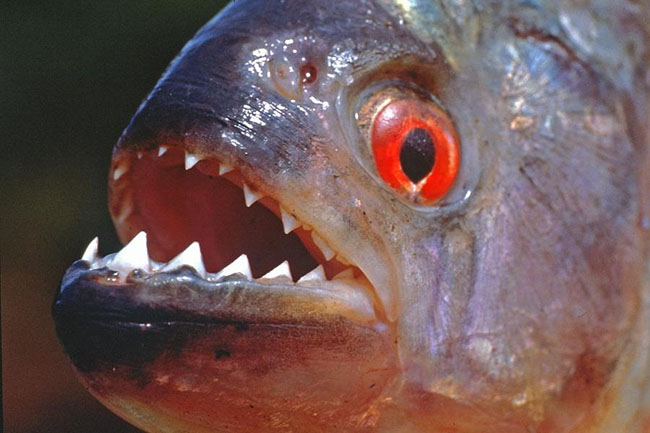Top 10 most dangerous beaches in the world

Top 10 most dangerous tourist beaches, a visit which could cost the lives of fans of exotic tourism.
1. The beaches of Tiwi Islands and Queensland, Australia
Did you know that Australian beaches are considered the most dangerous in the world? The danger at local beaches are not only sharks, but also poisonous jellyfish, which are considered, are holders of the very potent animal venom in the world. Burns that a person receives from touching him, unable for several minutes to cause death.
In addition, poisonous jellyfish, which is also called “Sea wasps”, almost invisible in the water, which poses an additional threat to humans.
To avoid danger, it is recommended to refrain from bathing on the Northern coasts of Australia in the period from October to April. Also experts advise to exercise caution in the second half of the day when the activity of the jellyfish is especially high.
Threat: poisonous jellyfish

2. The beaches of fish Hoek, South Africa
Coast of fish Hoek near Cape town have repeatedly won the title of most dangerous places in the world for tourists, because here there is one of the world's largest populations of white sharks. Cougar attacks happen here every year, despite the fact that in the 60-ies of the last century around the beaches was established underwater network, which was to protect tourists from attacks by marine life.
Threat: white sharks
.jpg)
3. Beach, Zipolite beach, Mexico
Mexican beach Zipolite beach is able to charm his appearance even the most experienced traveler: silky soft white sand and warm turquoise waves of the Pacific ocean promise a Paradise holiday in a comfortable tropical Paradise. But from April to June this earthly Paradise becomes deadly, because at this time there aktiviziruyutsya powerful underwater currents, and the full moon occur in the ebb and flow of seas, to cope with which not even an adult, physically strong man.
The danger of the local beaches in the summer months, aggravated also that in the water off the coast of the hidden sea cliffs and rocks, so the decision to swim here in the summer months can be lethal for tourists.
Threat: strong underwater currents.
.jpg)
4. Bikini Atoll, Marshall Islands
A small Atoll in the Pacific ocean, which gave name to the famous style of swimsuit, in the period from 1946 to 1958 in the framework of operation "Crossroads" was used by the US authorities for testing of atomic and hydrogen bombs.
During the test, held on March 1, 1954, Bikini island was almost completely destroyed. And after a while over 800 residents of this Pacific Atoll died from nuclear tests caused cancer.
Until now, the radiation levels here are much higher than normal: average external dose here today is about 3.8 R/h. But many tourists Bikini Atoll is beckoning with its threat of nuclear history and forced isolation. Despite the fact that you can get here just ordered the tour on the official website Bikini or in the Central Pacific expedition dives, each year for their dose of adrenaline coming a considerable number of fans of extreme tourism.
Threat: high levels of radiation
.jpg)
5. New Smyrna beach, United States
New Smyrna beach, one of Central Florida's beaches, for many years, carries the dubious title of the most unfortunate of the resort staff. Only in 2010 there had been over 600 collisions, and wrecks of different vessels. In addition, over the past half century from the impact of lightning on the beach new Smyrna killed 459 people. But, in addition to all these misfortunes, rest here tourists often become victims of sharks, which undoubtedly makes the beaches of new Smyrna are actually unsuitable for tourists.
Threat: shark, accidents, lightning strikes
.jpg)
6. Copacabana beach, Brazil
Copacabana beach in Rio de Janeiro is now considered one of the worst places to stay, because here is one of the highest in Brazil crime rate. Robbery, murder, drug trafficking, and even kidnapping is quite normal for these places phenomenon. In addition, in the vicinity of Copacabana, home to many members of the Brazilian mafia and drug lords.
Local police warned that the threat against the tourists not only on the coast but also in the nearby hotels, so staying here will be, to put it mildly, not the best idea.
Threat: high crime
.jpg)
7. Repulse Bay, Hong Kong
If the name of this Bay was translated as place of gulls nesting, now these coasts became more of a nesting debris. Because of the huge amount of waste and various kinds of pollution in Hong Kong the Repulse Bay has become dangerous not only for the local feathered inhabitants, but also to humans.
Discharged directly into the waters of the South China sea waste caused irreparable damage to the ecology of the region: "red tides" of dangerous chemicals, bacteria, algae, parasites and a terrible smell over the Bay made the place almost uninhabitable.
Threat: garbage
.jpg)
8. River beaches of Sao Paulo, Brazil
Piranhas living in the southeastern tributaries of the Amazon river in Brazil, to represent a person's greatest threat. The most frequent cases of attack of these species to human is captured on the beaches of Conceicao, Iganga, Itapui and off the coast of são Paulo. The latter beach is considered the most dangerous for tourists: in some months the number of victims of the piranha is almost a hundred people.
The reason for this aggression, sadly, became the man himself – because of the construction of dams ecosystem of rivers is disrupted and nests of predatory fishes appear in atypical locations, such as at public beaches.
Threat: piranha

9. Beaches of Virginia beach, USA
American public beaches of Virginia beach are the most long on the shores of the Chesapeake Bay and the Atlantic ocean, in addition, they can be confidently called the most well maintained and secure resort area for tourists.
But this impeccable cleanliness and tranquil nature area in recent years become a source of danger to tourists: the wild beasts, is also appreciate silence and comfort. In recent years, on the beaches of Virginia beach are increasingly recorded cases of animal attacks on humans, and a particular threat to carry wild Fox infected with rabies. But apart from rabid Fox regulars from the local coastal areas have become the squirrels and raccoons who RAID garbage cans in search of food, and these animals are the main carriers of infection and parasites, so they threaten the safety of tourists in Virginia beach.
Threat: wild Fox attack, infection,
.jpg)
10. Cable beach, Australia
Wonderful Australian beach cable beach, whose length is 22 kilometers, in recent years has turned from a Paradise of tourist place in quite a threat to man zone, and the reason for that was huge crocodiles, who settled in the coastal zone.
Because of the aggressive reptiles beach cable beach several times already closed, because crocodiles are protected under the legislation of Australia, which excludes the possibility of their destruction, but because of the constant increase in the population of cases of predator attacks on people are increasing.
Threat: crocodiles
.jpg)
You are interested in unusual sights? Then look here, and you will learn what the multi-colored beaches in the world!
All news of this category


